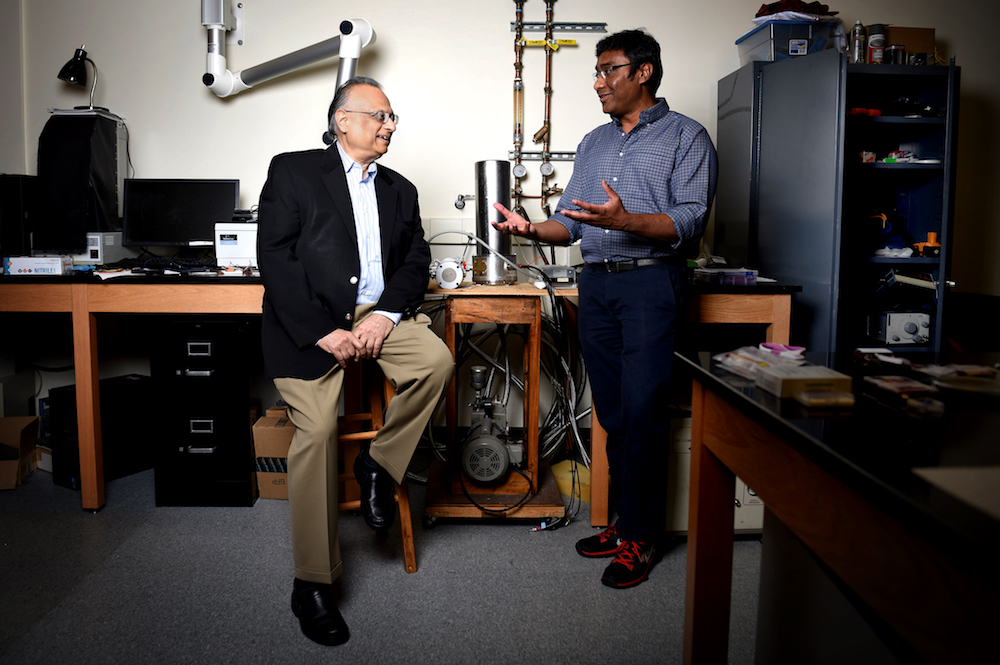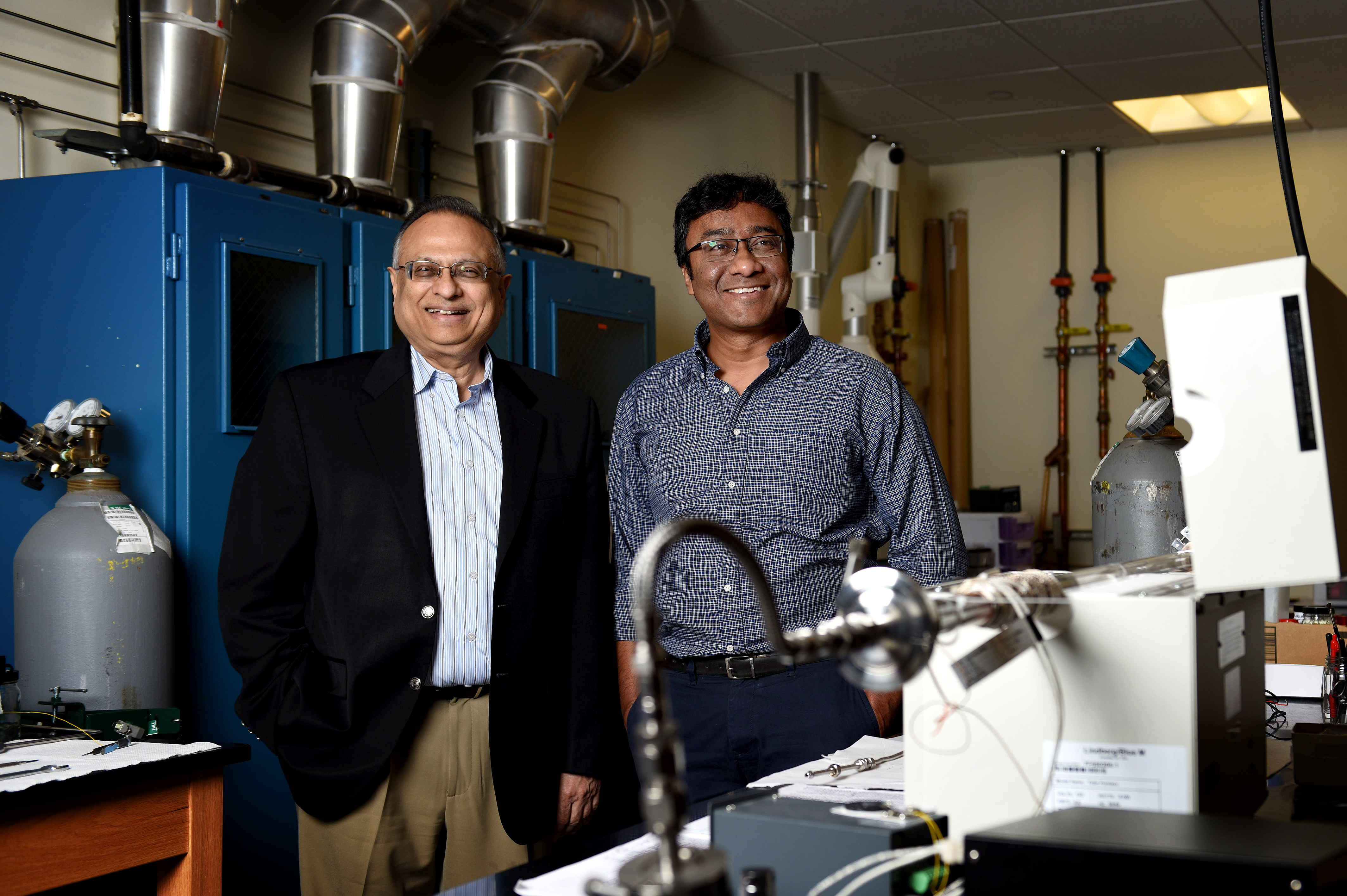Physics discovery unlocks ingredients of 2-D ‘sandwich’

Everything that exists in the digital world—photos, tweets, online courses, this article—is stored as 1’s and 0’s. At the software level, this information is written as computer code. At the hardware level, that code is brought to life by billions of transistors turning on (1) and off (0).
Transistors are in everything from computers and smartphones to MP3 players and digital cameras. But the power and efficiency of transistors is limited by the materials available to construct them.
Now, researchers from Northeastern University have made a discovery that opens up a whole new field exploring materials for transistors, photodetectors, flexible electronics, and other applications.
The work—published recently in the journal Science Advances—involves 2-D crystals, which are super-thin materials only a few atoms tall. Combining two 2-D crystals forms a heterostructure. Until now, physicists thought 2-D crystals had to be very similar, with all the atoms to lining up perfectly, in order to form a new heterostructure.
“But nature always throws a curveball at you,” says Arun Bansil, University Distinguished Professor of Physics and one of the paper’s authors.
Associate professor Swastik Kar co-authored the paper with Bansil and other colleagues at Northeastern. They observed for the first time that two completely dissimilar 2-D crystals can be arranged one on top of the other, atom by atom, in such a way that they fit together nearly perfectly and produce completely new properties.
“It would be like making a club sandwich,” Kar said. “You can have something that tastes like bread and something that tastes like meat.”
But the key, Bansil explains, is not just to assemble a sandwich where you can taste each layer separately. “You want to have some cooking going on so you can get some new flavors.”
In the world of condensed matter physics, discovering that two very different 2-D crystals can form a heterostructure is like combining water and flour for the first time and creating dough. It gives way to virtually limitless possibilities for new 2-D materials.

Research in the materials field is considered strong when theory and experiment go hand-in-hand, one reinforcing the other and vice versa. That’s exactly what happened for Kar and Bansil in their new paper. Photo by Matthew Modoono/Northeastern University.
When nature ‘autocorrects,’ discovery happens
The discovery occurred during an experiment where two dissimilar 2-D crystals were synthesized to stack on top of each other. Instead of just sitting there, unable to interact because of how little they have in common, the crystals did something unexpected.
“They just rotated with respect to each other,” Bansil said. He demonstrated by placing one hand on top of the other and twisting in opposite directions.
The researchers found that instead of growing randomly, these crystals rotate to form stable and aligned configurations, allowing new crystals to form.
This discovery is an example of nature’s ability to “autocorrect,” observed here at the nanoscale. That automatic realignment allowed the two materials to jive—their electrons started talking to each other and showing off new behaviors.
The researchers experimented by further changing the alignment of the two layers. They found that with each modification, the heterostructure produced new properties.
“Imagine if you had cake, and then you twisted it around and it became a biscuit, and you twist it again and it becomes something else,” Kar said. “From a material point of view, that’s how exciting this is.”
Kar’s lab is responsible for the synthesis and characterizations of these materials. Bansil’s group is focused on computational quantum theory. Research in the materials field is considered strong when theory and experiment go hand-in-hand, one reinforcing the other and vice versa. And that’s exactly what happened for Kar and Bansil in this case.
“What we found is a lot of new behavior in our system could be understood very clearly when we look at the theory that comes out of the quantum mechanical calculations,” Kar said.
This research could lead to new materials that change the way computers store the 1’s and 0’s of the digital world. Since the heterostructure Kar and his colleagues created can be modified in so many ways at the atomic level, there is great potential for writing, reading, erasing, and otherwise manipulating information. In other words, it allows researchers to change how ingredients behave after the cake has already been baked.
“That degree of control is very exciting,” Kar said. “It’s like the Food Network inside 2-D materials.”





